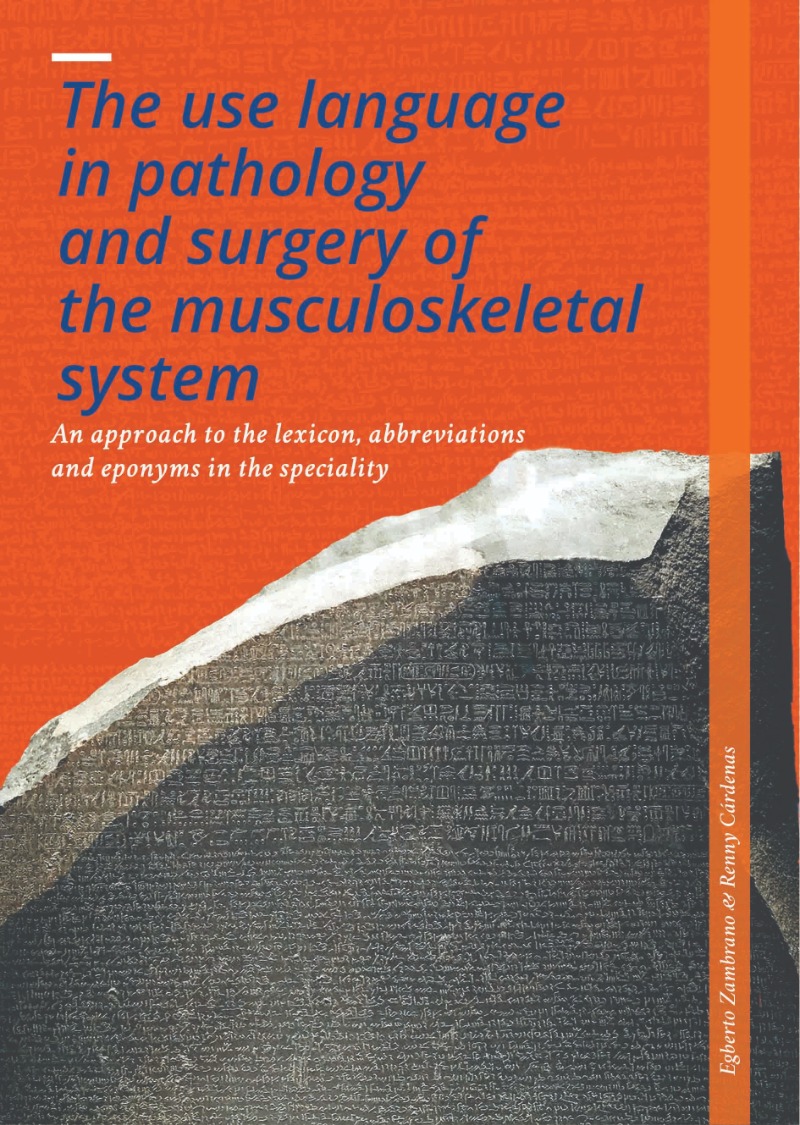
The use language in pathology and surgery of the musculoeskeletal system
Zambrano, Egberto Amado
Cárdenas Quintero, Renny
Colaboradores:
Márquez Poleo, Sigrid Zobeida (Diseñador)
Zambrano Vanegas, Nathalí (Traductor)
Editorial:Zambrano, Egberto Amado de Jesús
Materia:Sistema musculoesquelético
Clasificación:Lexicografía
Público objetivo:Profesional / académico
Publicado:2025-08-30
Número de edición:1
Número de páginas:340
Tamaño:16x22.5cm.
Precio:Bs3.475
Encuadernación:Tapa dura o cartoné
Soporte:Impreso
Idioma:Inglés
Libros relacionados
Reseña
It is a very complete book, where a solid knowledge of our language is linked, in a fluent and elegant manner, with diverse aspects of bone and joint conditions. Initially, basic concepts of linguistics are presented, with emphasis on the lexicographic perspective (Greek and Latin roots). Next, the acronyms and abbreviations used in Traumatology and Orthopedics are displayed, followed by a detailed list of eponyms present in the anatomy and its structures, pathology, semiology and its diagnostic maneuvers, in the different procedures of intervention and in the surgical material and instruments. The text continues with precise biographies of physicians whose names have become eponyms in the field and then gives way to a rich glossary that the authors, with a rather modest attitude, describe as “a small catalog, belonging to the wide repertoire of terms, phrases and sayings commonly used in the specialty”. Finally, the text closes with a thoughtful reflection on the duty of traumatologists and orthopedists themselves to “promote the contents of their science and art, transcending the academic field, to improve the knowledge that society should have of their work, and thus awaken in young people a vocation for our specialty”. Zambrano and Cárdenas remind us that the dissemination of medical science should not be the sole responsibility of scientific journalists who, due to the dispersion of their discipline and their sometimes superficial knowledge, may run the risk of “overvaluing or undervaluing content and, thus, propagating information that is far from the scientific truth”.




